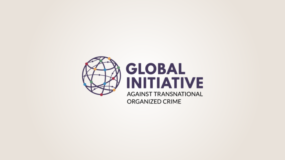Posted on 05 Sep 2022
States parties to the Arms Trade Treaty, civil society organizations, UN bodies and others met at the 8th Conference of Parties to the Arms Trade Treaty (CSP8) in Geneva in August to assess progress in the treaty’s implementation. The Global Initiative Against Transnational Organized Crime (GI-TOC) participated in the conference, and presented a report on illicit firearms flows during an official side event.
The illicit firearms trade is a global challenge that needs more urgent attention and international cooperation to contain conflict and violence.
The Arms Trade Treaty (ATT) is a multilateral instrument designed to regulate trade in conventional weapons by establishing international standards governing arms transfers. The treaty came into effect following years of discussion at the UN around the need for arms control, given the devastating impact of unregulated proliferation of arms in conflict, terrorism and crime settings.
Since it entered into force in December 2014, the treaty has guided the efforts of 111 state parties to regulate the licit and eradicate the illicit trade in weapons. It also provides a framework for member states to adapt their domestic laws and regulations, and a prohibition to export if the transfer violates international agreements – in particular those relating to illicit trafficking in conventional arms – and if the arms exported could result in violations to humanitarian and human rights law. Where the export is not prohibited, states must conduct a risk assessment to ensure that the firearms transferred will not be misused.
The threats of diversion: Illicit firearms flooding criminal markets
As one of the key priorities for further work, the need to address diversion of arms to illicit markets was reinforced by several countries at the opening session of the CSP8, in particular by the Group of Latin America and Caribbean Countries (GRULAC) and the African Group. Brazil, Dominican Republic, Mexico, Niger, Panama, Paraguay and Sierra Leone were vocal in stressing the need to tackle the issue of diversion of conventional arms, in particular small weapons and light firearms, into the hands of criminal groups.
Preoccupation with illicit trafficking in firearms deriving from misuse or unregulated availability pre-dates the ATT by many years. However, the ways in which conflicts and widespread armed violence in some parts of the world have become endemic in more recent times have heightened the need to address how legal and illegal firearms exchanges interact, and how they converge with other criminal economies, including through a multidimensional approach.
In March 2022, the Mexican government presented a resolution before the UN Commission on Narcotic Drugs, which highlighted the need to address the links between drug trafficking and illicit arms trafficking. As a substantive contribution to these convergence discussions, and in collaboration with the government of Mexico, the GI-TOC launched a new research brief on illicit firearms flows at a side event titled ‘Addressing the increasing links between arms trafficking and other forms of organized crime’.
The brief shows how illicit firearms underpin much of today’s global organized criminal economy. Whether illegally manufactured, recycled from past conflicts, diverted from government stocks or smuggled from areas where the supply is legal and readily available, firearms and ammunition strengthen and expand illicit markets across the world. Criminal networks are both consumers and suppliers of illicit firearms, which impart criminal actors with symbolic power and the capacity for violence needed to expand their illicit activities, often by exerting territorial market control.
The GI-TOC’s research team together with a group of international experts, human rights specialists and government representatives assessed how illicit weapons are deployed to generate violence; the profits they generate; how they escalate conflicts between criminal entities; and other issues such as regulatory frameworks governing the illicit trade, responsibility of businesses for violations deriving from the trade and the need to incorporate a human rights angle in arms-control discussions.
Universalization, financial constraints and lack of transparency in reporting
The need to tackle ‘the downward trend in accession’ and strive for universalization of the ATT was emphasized by some parties. While the recent ratification by the Philippines of the ATT was welcomed by several states, a number of states parties, including France and Argentina, voiced the importance of the universalization of the ATT to make it more fully effective. They called on new countries to accede to the treaty, including major exporting and importing states.
Delegates also discussed the importance of compliance and reporting of states parties on the implementation of the obligations set forth in the treaties. Norway and Belgium expressed concern over the declining rate of annual reporting, a sentiment supported by civil society groups that were present. Discussions at the plenary also raised concerns over the financial situation of the ATT governance structure – a point highlighted by New Zealand, Canada, the UK, Japan and others. A proposal was presented by the UK to limit participation of those countries who did not meet their financial obligations, but this was vehemently rejected by GRULAC, the African Group and civil society. After lengthy negotiations, it was abandoned.
Throughout, states parties discussed the need for a holistic engagement with civil society, and coordination and cooperation with UN bodies as key to achieving the ATT’s objectives. Several states, including Norway, the Philippines and Mexico, noted that synergies with other international bodies would be beneficial to the ATT process. They emphasized that doing so would be a key element needed to tackle the growing illegal arms trade by enhancing monitoring and deterrence efforts in conjunction with the Conference of the Parties to the United Nations Convention against Transnational Organized Crime. It was argued this would help make tackling illicit firearms markets a higher priority for international actors.
It was also clear from discussions that in order to properly assess cases of diversion and strengthen international assistance in this risk area, collaboration across public, private and non-governmental sectors will be paramount. Engaging with experts in the fields of arms control and human rights, as well as with civil society and community organizations supporting victims, will therefore be fundamental in any effort to understand and contain illicit markets and their impact. The GI-TOC will continue to engage in this forum and contribute to these efforts.



